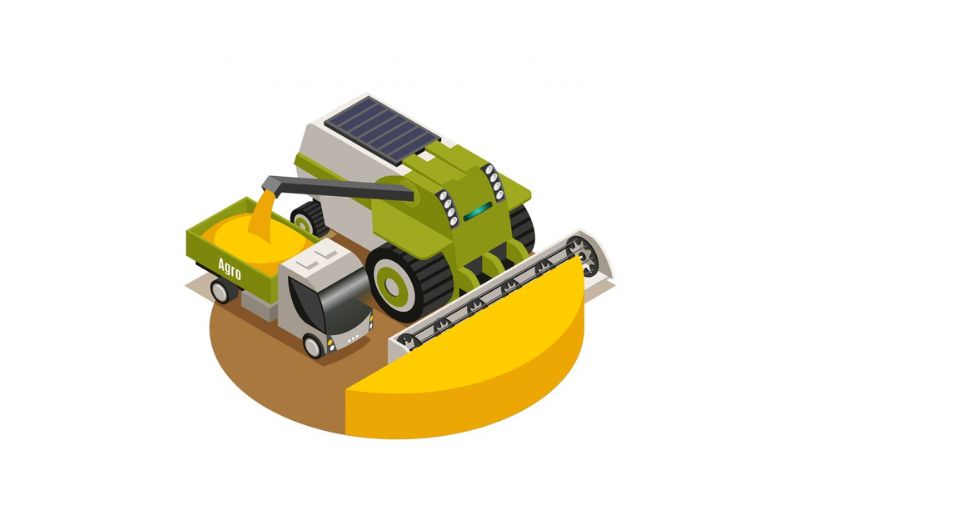
Mar 05, 2025

The Global Grain Combine Harvester market are investigated by Metastat Insight in detail as different elements advancing the industry. Two examples are extensive transformations in harvesting farm machinery and technological advancements affecting agriculture as a whole- particularly using productivity-enhancing technology. Grain combine harvesters have developed and put into use to contribute towards the modernization of farming practice by improved efficiency, lower reliance on labor, and greater yield from harvesting grain. Increased importance was given to the mechanized harvest with growing emphasis on precision agriculture in various regions.
Global Grain Combine Harvester market is estimated to reach $7,608.00 million in 2025 with a CAGR of 7.8% from 2025 to 2032.
The equipment for harvesting grains has considerably advanced, thanks to innovations aimed at improving operational efficiency. Manufacturers have invested quite a lot in research to produce features that can improve performance, fuel efficiency, and adaptability to different field conditions. All the continuous efforts to perfect the machines have been able to throw up machines that can harvest different crops while minimizing wastage. Now, farmers are more inclined towards machines that have automated monitoring and control during real-time operational performance, which allows management of large-scale production applications more accurately. The great importance attached to these improvements has created a lot of interest in the purchase of machinery for sustainable farming.
The above are some of the factors that have affected the growth of global agricultural machinery-the very own integration of technology, economic conditions, and changes in farming practices. Historically, the mechanization of the traditional harvesting techniques toward highly automated harvesting equipment has been witnessed in most of the markets owing to the needs of feeding the increasing population. These machines have offered efficiency to farmers by creating potential yield and minimizing post harvest losses. The result has been a steady increasing demand for combines that use precision control and adaptability to many agricultural scenarios.
Highly advanced state-of-the-art solutions have made space available for many different models to meet all agricultural requirements, thanks to the varied manufacturers existing around the world. This greatly enables any farmer to choose whatever they desire in terms of their field size or crop variety or even the price of operation. They have invariably come up with serious innovations which now provide efficient solutions to real-life situations. The complex modernizing challenges of agriculture for which feature sets are just not going to stop evolving would rely on advances in production and despite such boundless innovation possible in modeling, the competence of newer models has thus assured it, ignoring the stringent realities and complexities of modern farming.
There have been significant increases in the use of grain combine harvesters across the below-mentioned regions with pooling by both government initiatives and private investment. The concentration on increased agricultural output through mechanization has established programs to enable farmers to adopt new technology in the sphere of harvesting. In some places, there have been financial aid and grants that can be used for making modern machinery accessible to farmers, which in turn has influenced their level of adoption. The urgency to improve national food self-sufficiency has emphasized the importance of mechanization in raising quality and quantity output.
Although mechanization has made great strides in harvesting, several factors including costs and accessibility, as well as maintenance requirements, still shape the market. While purchasing such equipment would require a reasonably high initial investment, the amount keeps becoming prohibitive to most farmers, particularly those operating on a small scale. There have, however, emerged various ways financing and leasing to make such advanced harvesting solutions accessible to much wider clientele pools. Besides, improved after-sales and maintenance services have further bucked the trend, convincing farmers to switch to modern equipment since they would be assured of their long-term efficiency levels.
Metastat Insight was able to give one a clear picture regarding the ongoing changes in the Global Grain Combine Harvester Industry and its dynamics in advancing agricultural efficiency. As the farming practices will not up level their modernization, so the dependency on sophisticated harvesting techniques will be much higher toward productive and sustainable grain production. At the same time, it marks the industry's concern that modern intelligent machinery is becoming an integral part of global food demand in the future.
Drop us an email at:
Call us on:
+1 214 613 5758
+91 73850 57479